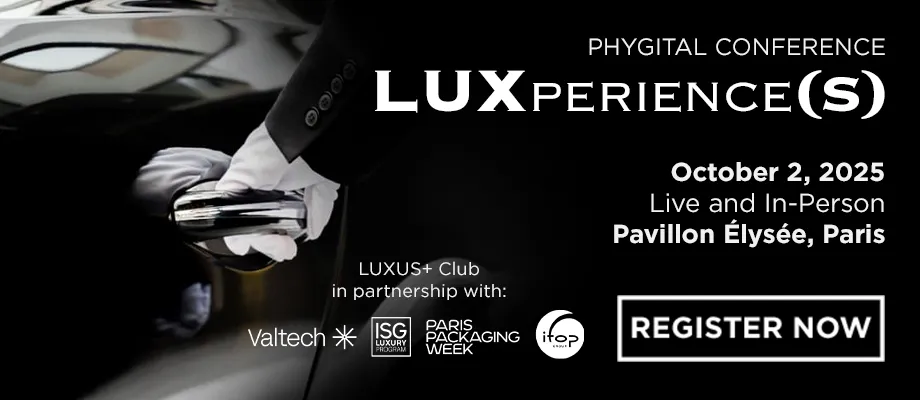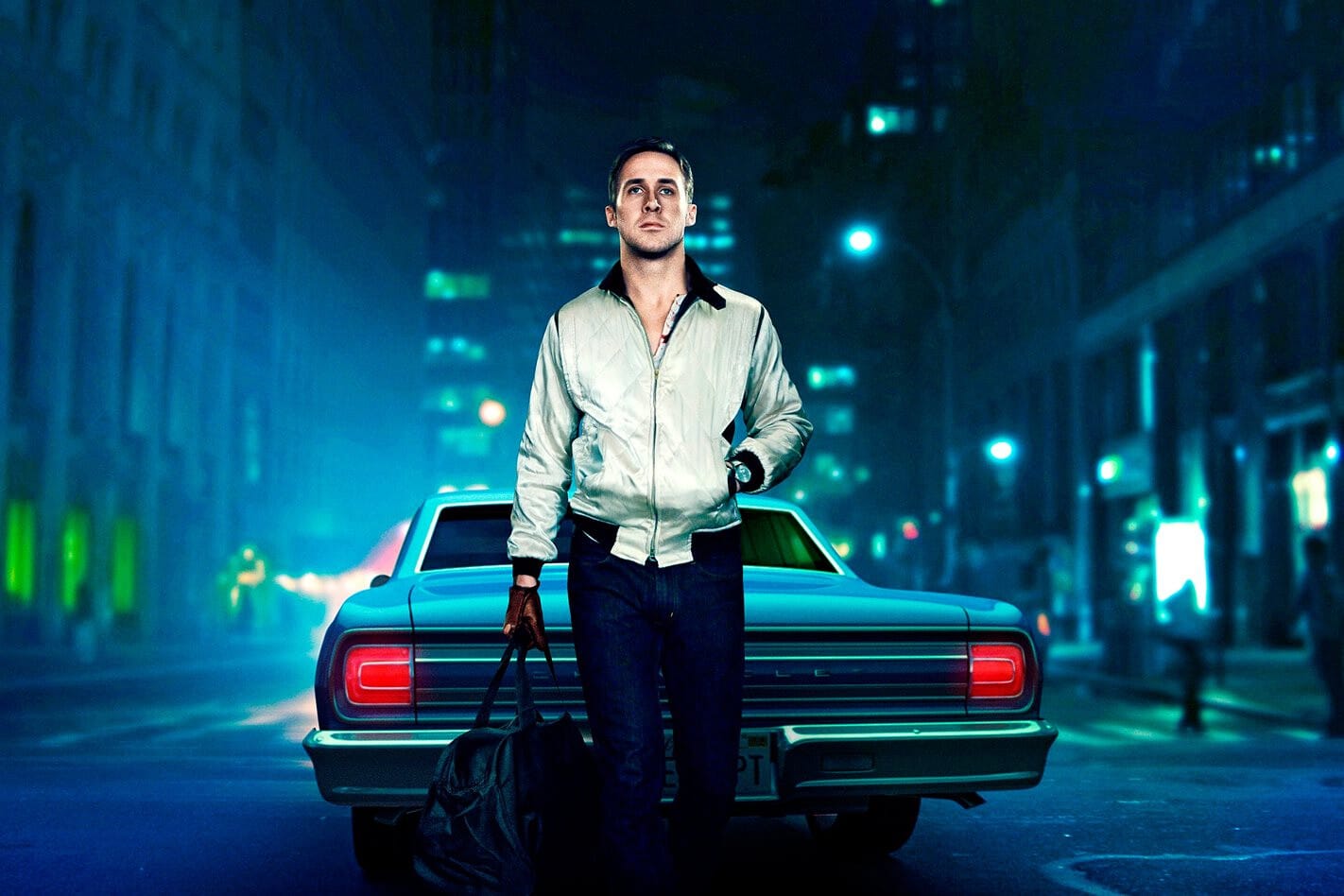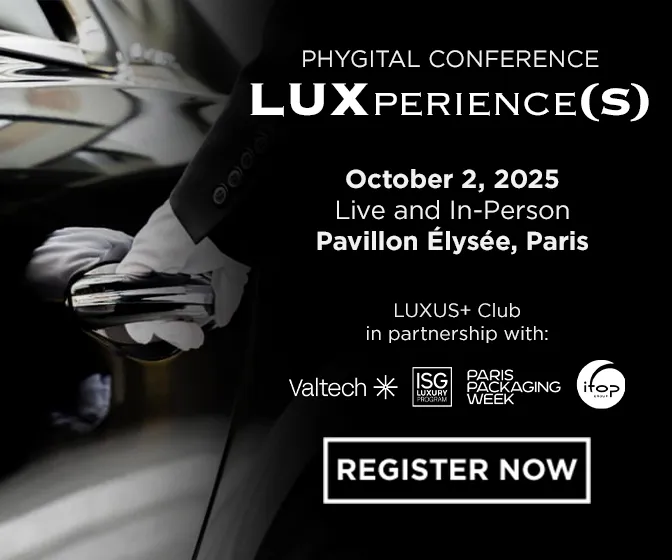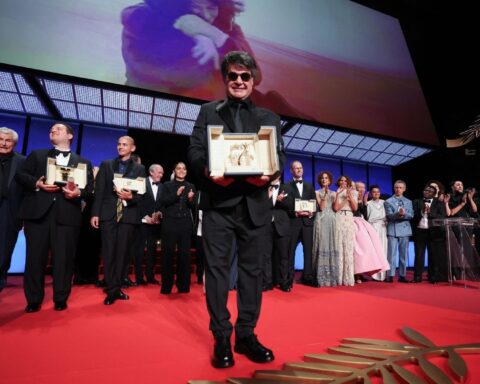The Paris Motor Show returns for its 90th edition. This year sees the return of European and American manufacturers such as Volkswagen, Audi, Tesla and BMW. To mark the show’s 126th anniversary, a host of beautiful machines will be on show, whether they have left their mark on automotive history or the collective imagination.
In addition to the latest automotive innovations and world previews, the 90th Mondial de l’automobile, which runs from October 14 to 20 at Porte de Versailles in Paris, will feature 19 vehicles that have marked several key eras in the development of this industry, from the Peugeot Type 3 to the Tesla Model S, via the Citroën DS and the Mercedes S-Class.
There will also be 25 proud cars that have marked several generations of viewers on the big and small screens, including Batman, James Bond, Starsky and Hutch, Crockett and Tubbs, Marty McFly, Ian Malcolm, John Wick and Professor Ellie Sattler…
These will range from authentic mass-produced models to concept cars and other customized vehicles, such as the Batmobile from Tim Burton’s film, the Delorean from Back to the Future or the Wrangler Sahara expedition jeeps from Jurassic Park.
Of course, some may bemoan the absence of such legends as the Ford Mustang GT390 driven by Steve McQueen in Bullit, the Ecto-1 from Ghostbusters or the GMC Vandura from The A-Team.
Here’s a closer look at seven of them, presented in the Pop Culture area ( Pavillon 7-1) designed by Movie Cars Central. 42 km from Paris, in Etréchy (Essonne), the company boasts a car museum housing Europe’s largest collection of film and TV series cars, which can be viewed, rent… as well as driven on a racetrack!
Delorean DMC-12 – Back to the Future (1985-1990)
“The way I see it, if you’re gonna build a time machine into a car, why not do it with some style?“ exclaims the mad scientist in Back to the Future.
If there’s one star of the ’80s, it’s the Delorean DMC-12. The sole flagship of the American Delorean Motor Company, founded in 1975 by engineer and businessman John Delorean, this “car of the future” had a history as flamboyant as it was dazzling.
The legendary coupé’s poor performance didn’t find its audience, nor did it justify its exorbitant price ($24,000). Its brushed stainless steel bodywork and emblematic gullwing doors may have been gleaming in design, but they proved extremely complicated to paint. Declared bankrupt, the company finally ceased production in 1981.
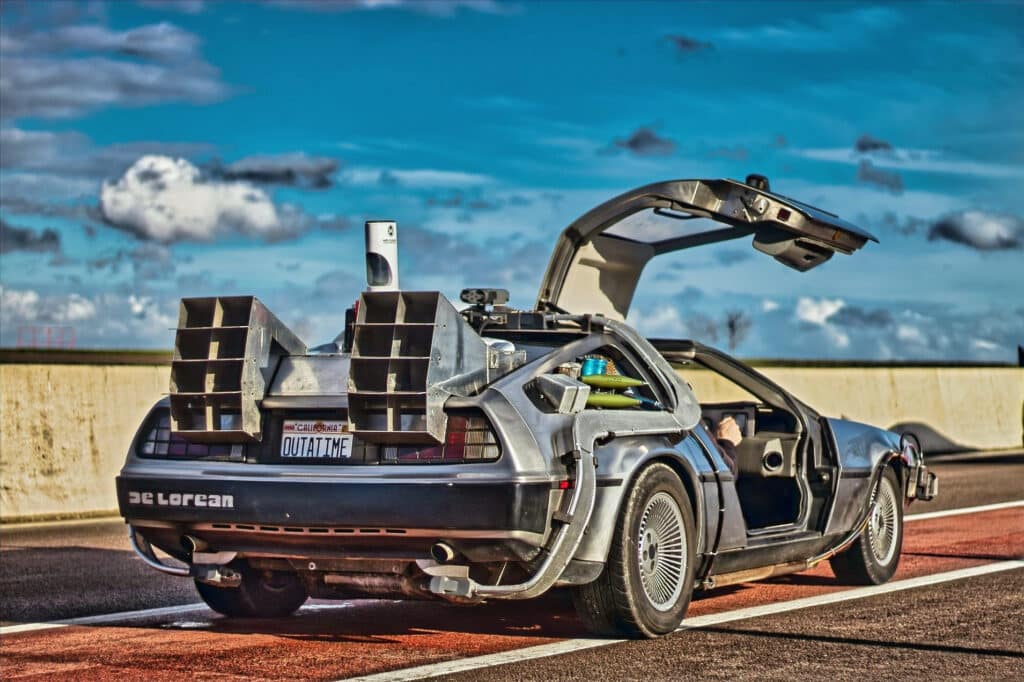
It wasn’t until Robert Zemeckis’ Back to the Future saga that the myth rose from the ashes, four years later. Doc Emmett Brown and Marty McFly’s time-travelling car featured a time convector and the famous Time Machine triple-display dashboard.
No fewer than six cars were needed for the shoot, one for static shots, another for rolling shots and a third, cut out for interior shots. Three more were added for the final part of the trilogy. Over the course of the adventure, this UFO of the road has been transformed into a cyberpunk hovercraft and a rail wagon in the American Wild West, this last transformation having, without divulging, been poorly finished.
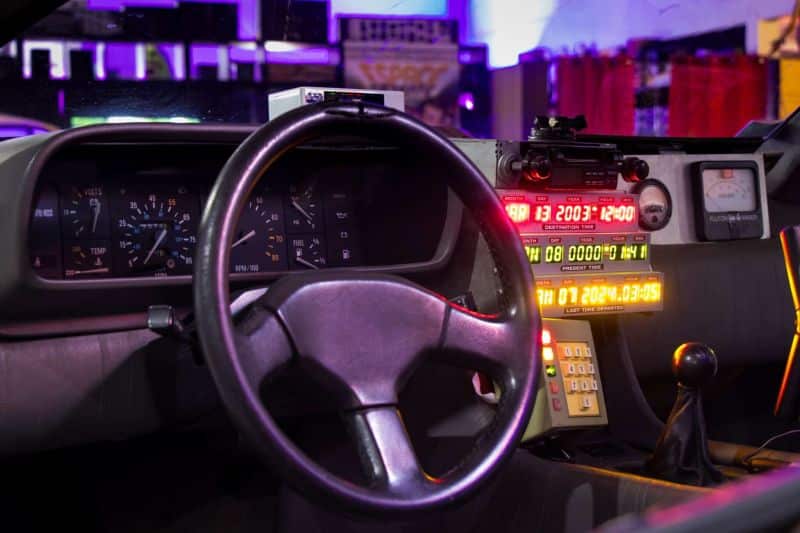
Its 130 hp V6 engine and weight of almost a ton actually struggled to reach the “88 mph” described in the film, so the director opted for sound editing to give it some pep. We hear the raucous sound of a Porsche 928 V8 coupled with the whistle of a landspeeder, straight out of the Star Wars saga by his friend Georges Lucas.
BMW 750iL – Tomorrow never dies (1997)
Less well known than Sean Connery’s timeless Aston Martin DB5 and Daniel Craig’s DBS, the BMW 750iL is another movie buff’s memory with another unforgettable James Bond: Pierce Brosnan.
Also cherished by a certain Karl Lagerfeld, 007’s car is featured in Tomorrow Never Dies. In this film, Her Majesty’s most famous spy battles a media tycoon who is adept at fake news and dreams of starting a third world war with China.
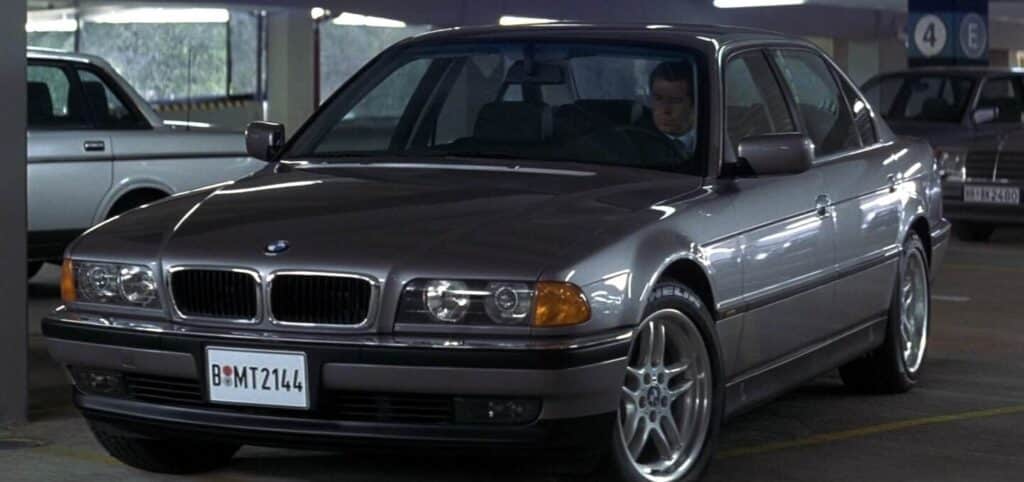
In the film, the car – an armored version – helps James make his way through a Hamburg parking lot infested with bad guys armed with high-powered weapons, including a bazooka.
Remote-controlled and voice-activated, the film version foreshadows civilian drones and automatic driving, almost ten years ahead of its time!
The most opulent limousine ever produced by the German manufacturer in the 1990s, the BMW 750iL – the L standing for long – boasts a 5.4L V12 engine producing 326 hp and weighing two tons. A relic of its time, it wasone of the very first vehicles to feature a color GPS screen, as well as a removable writing stand in the rear.
While the Kaiser of fashion equipped his BMW with a refrigerated minibar, a fax machine and a VHS video recorder with a giant screen, the British spy had a completely different workaholic arsenal at his disposal: a safe concealed in the glove compartment protected by fingerprints, a missile launcher, a smoke projector and a sharp-edged object dispenser!
Daytona Spyder “Mcburnie” 1972 – Miami Vice TV series (1984-1989)
Pastel T-shirt under a white suit. There’s no doubt about it, the sartorial style of two DEA detectives, James “Sonny” Crockett and Ricardo Tubbs, doesn’t go unnoticed. Even less so at the wheel of their roaring car speeding down Ocean Boulevard.
In 1980s Miami, bullets whistle through deckchairs and palm trees. To survive such a hostile environment, there’s nothing like a faithful steed, in this case a 1972 Daytona 365 GTS/4 Replica.
With registration number ZAQ 178, this convertible with its “Midnight Jet Black” paintwork, 4.4-liter V12 engine and 352 hp, serves as Crockett’s cover, impersonating either a smuggler or a wealthy buyer.
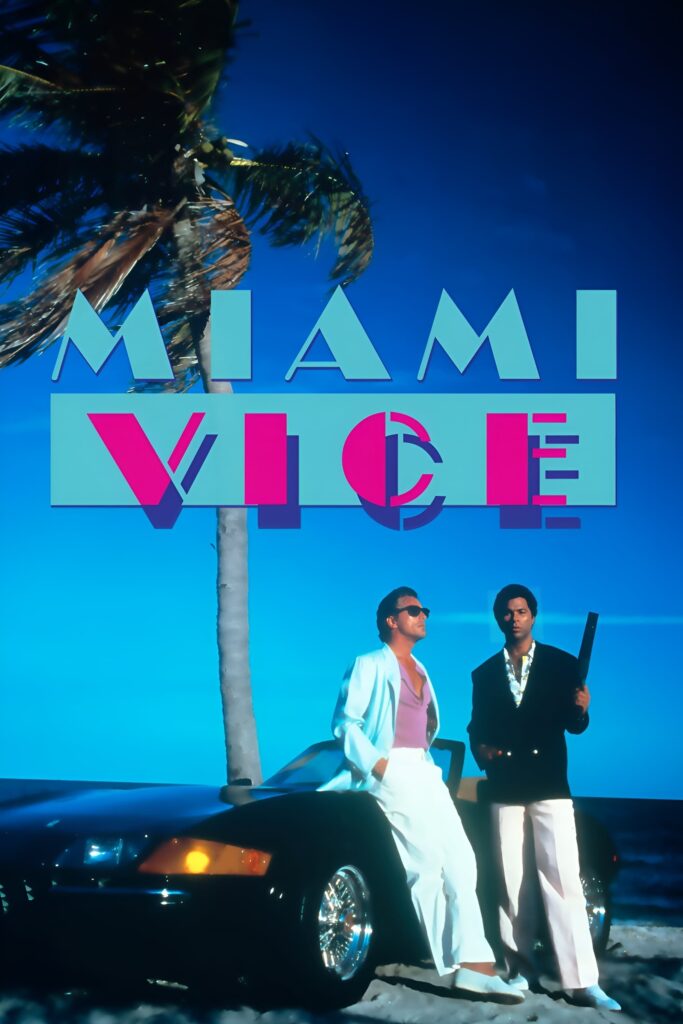
Except that in the first two seasons, it was impossible to obtain an authentic Ferrari, so the production team had to cobble together a 1980 Chevrolet Corvette C3 automatic transmission chassis with the help of a coachbuilder – Tom Mcburnie. All the production team had to do was stick on a genuine Prancing Horse sticker, include a matching key-ring and the job was done.
However, the Maranello automaker didn’t like hearing the heroes talk about their “Ferrari”, passing off the copy as the real thing. He sued, but settled out of court, withdrawing the replica from the series. The original car is even destroyed in one episode, so much so that Ferrari ends up delivering two black Ferrari Testarossasin place of the first one … which the team hastily repaints in white, the color proving far less interesting in the night scenes for the photography of Michael Mann, then not yet the director of Heat.
1982 Pontiac Firebrid Transam, aka KITT, K2000
A car as classy as it was loquacious, this was David Hasselhoff’s faithful steed in the K 2000 series. The presumed dead agent “Michael Knight” is indeed inseparable from his car of conscience, the aptly named K.I.T.T, an acronym that translates as “Knight Intelligence Two Thousand”.
Glen Larson, the reference for the TV series, is held back by a contractual obligation at Universal. From the pile of scripts at his disposal, he randomly selected the one featuring a talking car. Unconvinced by the script, but facing economic difficulties, Pontiac’s boss agreed to lend the vehicles. Pontiac’s California-based dealership and assembly plant were on hand for production.
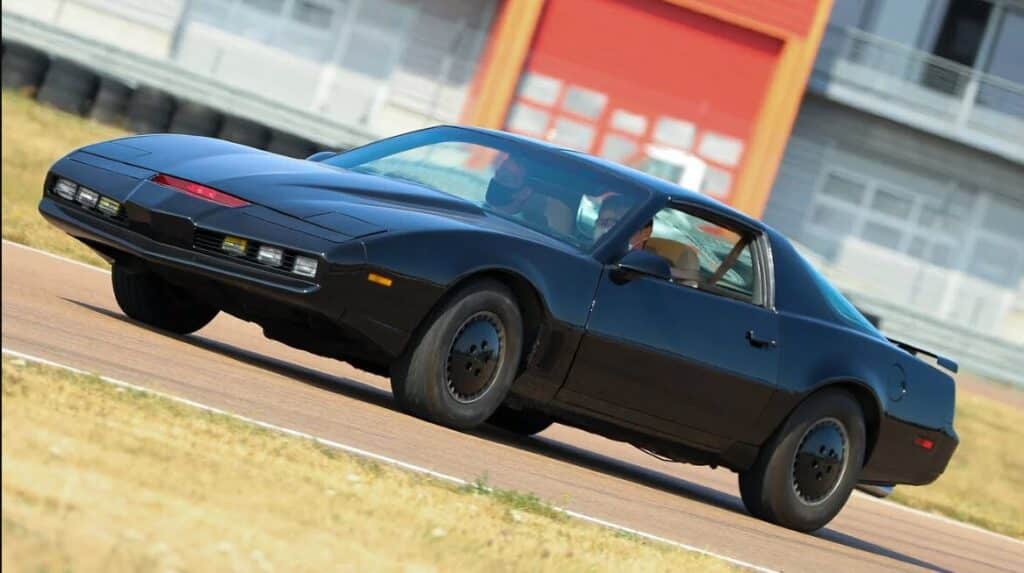
The studio entrusts final production and assembly to John Ward, who customizes the dashboard. He also modified the bodywork of a 1982 Pontiac Firebrid Transam, adding the famous red light strips to the front of the car.
Despite an extremely tight deadline – 2 weeks – art director Michael Scheffe and his team succeeded in creatingan iconic car anda successful series (90 45-minute episodes) that would make his favorite actor, David Hasselhoff, an international star. Michael Scheffe’s prowess led him to join the teams of Back to the Future and Spiderman in 2002.
On the set, 4 to 9 cars are destroyed per season, not to mention that each transformation of the Pontiac into a K.I.T.T. costs the production around $20,000.
1969 Ford Mustang Mach 1 – John Wick
Queen of the tarmac and the most desirable car in the world, the Ford Mustang has made numerous successful appearances in American blockbusters. From Bullitt to John Wick and Transformers. From the green of Steve McQueen’s film to the yellow with black stripes of Tarantino’s Grindhouse, the car has a lot going for it.
All the more reason for John Wick to opt for such an automotive legend. For their part, Robert Zemeckis refused to replace the Delorean from Back to the Future with this one, despite the $75,000 offered by the manufacturer for this product placement.
It’s easy to forget that, before becoming the best-selling sports car in the world, the Ford Mustang was originally conceived as a democratic car.
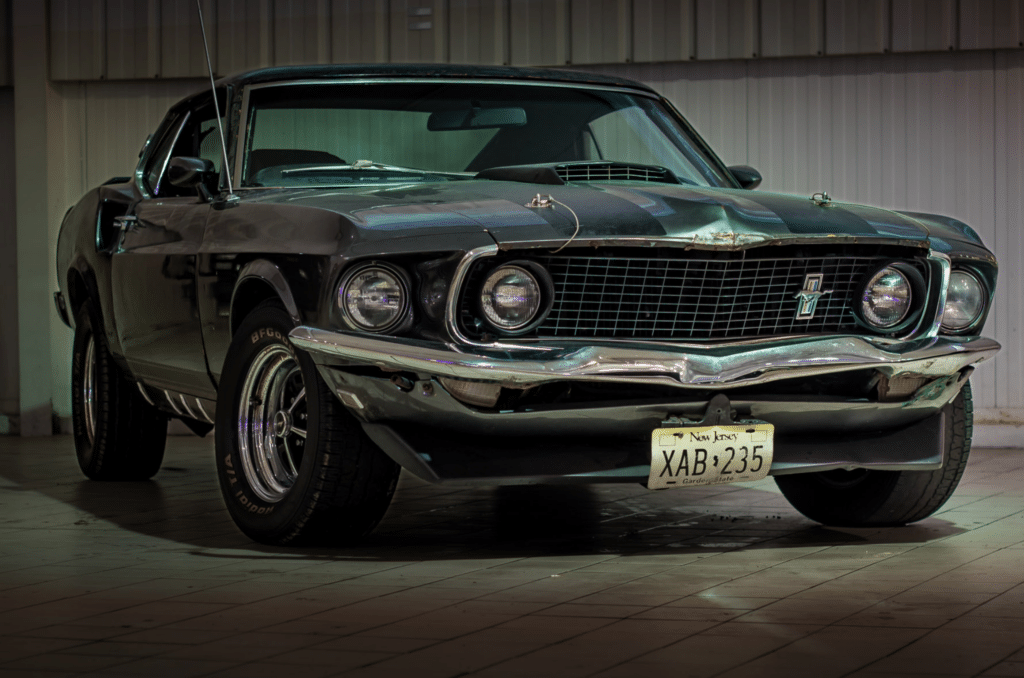
The famous hitman, played in 2014 by Matrix star Keanu Reeves, declares in the opening minutes of the film that he owns a rare 1969 Mustang Fastback Boss 429. However, for economic reasons, the model seen on screen is in fact a Mustang Mach 1.
In fact, the first, of which 859 were produced in 1969, cost a whopping $400,0000. The second, much more affordable, sold 70,000 units that same year.
Having just buried his wife, found his 4,800 rpm V8 muscle car stolen and his dog killed by the Russian mafia, killer John Wick is back on the job, determined to exact his revenge…
1973 Chevrolet Chevelle Malibu – Drive (2011)
Kavinsky’s electro track “Nightcall”, brought back to the forefront during the Paris Olympics, via an anthology featuring with singer Angèle and the group Phoenix, is not the only souvenir from the film Drive.
Like the mysterious driver played by Ryan Gosling, the 1973 Chevrolet Chevelle Malibu is a real protagonist of the thriller directed by Nicolas Winding Refn. A singular story, the model is not a product placement: it was the Canadian actor himself who chose the model to match his character.
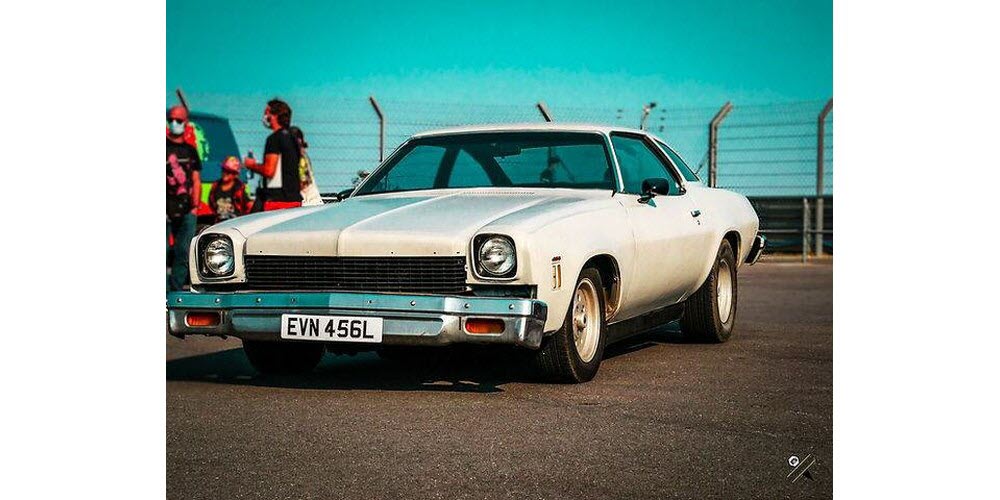
Ryan Gosling restored the car himself, finding it in a Los Angeles junkyard. This preliminary step was key for him in getting into the role of this Hollywood stuntman by day and chauffeur for organized crime figures by night.
Like an extension of his character, the Chevrolet Chevelle Malibu may be a first-class muscle car with a powerful 7.4-liter V8 engine, but it’s the perfect embodiment of the fire beneath the ice. Its dark gray hue is both discreet and disquieting.
Ferrari Testarossa – Miami Vice (2005)
A film adaptation of the famous 1980s bling series, Two Cops in Miami, Miami Vice is one of those works exhumed– along with American Psycho – by the Generation Z cohort.
The film, starring Colin Farrell and Jamie Foxx in Miami, is less sunny but just as edgy, particularly with its white Ferrari Testarossa, with the film’s title track, Numb/Encore – featuring rockers Linkin Park and rapper Jay-Z – blasting from the speakers.
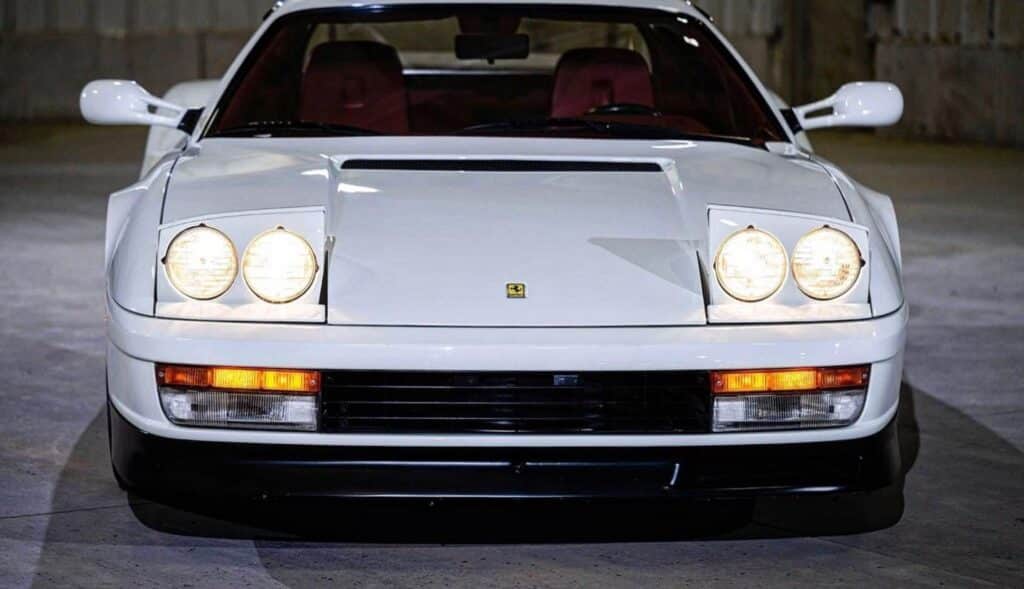
The hue recalls the choice made by the production team of the original series Two Cops in Miami following Ferrari’s dissatisfaction. A true emblem of the sports cars of the glittering Eighties, the car houses a rear mid-engine, 12-cylinder, 4.9L flathead engine developing 390 hp at 6300 rpm.
Capable of accelerating from 0 to 100 km/h… in 3.5 seconds, with a top speed of 297 km/h, the Testarossa ranks as the world’s fastest car in the 1980s, alongside the Lamborghini Countach, the model destroyed in the film The Wolf of Wall Street. One of the models driven by golden boy Jordan Belfort, aka Leonardo Di Caprio, sold at Bonhams in late 2023 for $1.655 million.
Read also > A short history of luxury: Tag Heuer’s Carrera watch has been in the race for 60 years
Featured Photo: © Bold Films/Odd Lot Entertainment/Marc Platt Productions/Seed Productions

